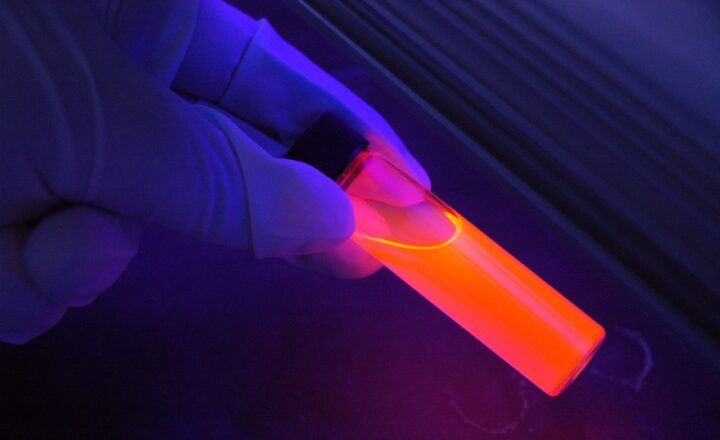A Deep Dive into Ballistics: Understanding the Science of Firearms
November 11, 2024

Ballistics is a fascinating field of study that combines physics, engineering, and chemistry to understand the dynamics of projectiles, particularly firearms. Whether you’re a shooting enthusiast, a hunter, or simply curious about how guns work, understanding ballistics can enhance your appreciation for the science behind these powerful tools. In this article, we will explore the different types of ballistics, how projectiles behave when fired, and the principles that govern their motion.
1. What is Ballistics?
Ballistics is the science of projectiles and firearms, encompassing everything from the launching of a projectile to its flight and impact. It can be categorized into three main branches:
- Internal Ballistics: The study of the processes occurring inside the firearm when a shot is fired. This includes the ignition of the propellant, the pressure buildup, and the motion of the bullet through the barrel.
- External Ballistics: The study of the bullet’s behavior in flight, including its trajectory, velocity, and influence of environmental factors like wind and gravity.
- Terminal Ballistics: The study of the behavior of a projectile when it strikes a target. This area focuses on how bullets penetrate materials and the effects of different projectiles on living tissue.
Understanding these branches of ballistics is crucial for anyone involved with firearms, from manufacturers to users.
2. Internal Ballistics: The Launch Phase
Internal ballistics deals with what happens from the moment the trigger is pulled until the projectile exits the barrel. Key elements of internal ballistics include:
- Ignition of the Propellant: The firing pin strikes the primer, igniting the gunpowder. This chemical reaction generates high-pressure gases that propel the bullet forward.
- Pressure and Temperature: Upon ignition, pressure and temperature rise rapidly within the chamber. The quality of the gunpowder and the design of the gun greatly affect these variables.
- Bullet Acceleration: As the gases expand, they push the bullet down the barrel. The length of the barrel, the type of ammunition, and the firearm’s design all influence the acceleration and speed of the bullet.
The efficiency of these processes is called the ‘load,’ which includes the bullet weight, powder type, and charge. A well-optimized load significantly improves accuracy and velocity.
3. External Ballistics: The Flight Path
Once the bullet exits the barrel, external ballistics takes over. Several factors influence the bullet’s trajectory:
- Velocity: The initial velocity of the bullet, influenced by the length of the barrel and the energy of the propellant, affects distance and accuracy. Higher velocities generally result in flatter trajectories and less time spent in the air, minimizing the effect of external forces.
- Drag: As the bullet travels through the air, it experiences air resistance, which slows it down. The design of the bullet (i.e., its shape and surface area) plays a critical role in managing drag.
- Wind and Weather Conditions: External elements like wind, humidity, and temperature can alter the bullet’s trajectory, requiring shooters to adjust their aim.
Understanding these aspects helps shooters make informed decisions regarding ammunition choice, environmental factors, and shooting techniques.
4. Terminal Ballistics: Impact and Penetration
Terminal ballistics studies the behavior of a bullet upon striking a target, which leads to critical considerations for law enforcement, military, and self-defense firearm users:
- Penetration: This refers to how deeply a bullet penetrates a target. Factors such as bullet design, mass, velocity, and the target’s material play significant roles. Hollow-point bullets, for example, expand upon impact, causing greater damage while limiting penetration through barriers.
- Ballistic Gel Testing: A common method used to simulate human tissue, ballistic gelatin helps researchers study how bullets behave in terms of penetration and expansion. This testing informs the design of ammunition for various applications.
- Wound Ballistics: Understanding how bullets create wounds in living tissue is essential in both medical treatment and law enforcement. Different projectiles can cause varying degrees of tissue damage, influencing decisions on ammunition usage in critical situations.
The study of terminal ballistics addresses life-saving and ethical considerations for firearm users and manufacturers alike.
5. The Evolution of Firearm Technologies
The field of ballistics is continually evolving, driven by advancements in technology and materials. Notable developments include:
- Smart Ammunition: Innovations such as computerized systems and smart technology are leading to the development of ammunition that can adjust its characteristics (e.g., velocity, trajectory) through the use of embedded sensors.
- Advanced Materials: The introduction of new materials in bullet manufacturing, such as polymer or composite materials, can enhance performance, reduce weight, and improve terminal ballistics.
- Enhanced Accuracy Systems: Incorporation of optics and electronic systems in firearms allows for more precise aiming, compensating for factors affecting bullet trajectory.
These innovations are not only changing the way firearms are used but also raising essential discussions around ethics, safety, and the impact of advanced technologies on society.
6. Understanding the Importance of Responsible Firearm Use
With the growing emphasis on firearm use in various sectors, it is crucial for all users to understand the science of ballistics for safety and responsibility. Responsible usage of firearms includes:
- Education: Knowledge of how firearms operate, the principles of ballistics, and the consequences of misuse helps promote safe handling and operation of firearms.
- Training: Regular training on handling and using firearms ensures users remain skilled and aware, reducing the likelihood of accidents.
- Ethics and Awareness: Understanding the implications of using firearms in different contexts, including hunting, self-defense, or law enforcement, encourages ethical decision-making.
By fostering a culture of education and responsibility, we can create safer environments for all.
Conclusion
Understanding ballistics is essential for anyone involved with firearms. From internal dynamics to the projectile’s flight and impact, the study of ballistics encompasses a vast array of scientific principles. As technology continues to enhance our understanding of these concepts, responsible firearm use remains paramount. Whether you are an enthusiast or a professional, delving into the science of ballistics will deepen your appreciation of firearms and their applications in our society.
If you’re looking to expand your knowledge further, consider attending workshops, taking courses, or joining local shooting clubs. Knowledge is not only power but also a crucial component of safe and responsible firearm use.







